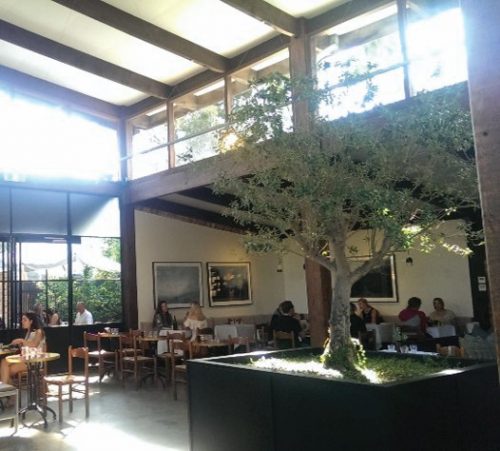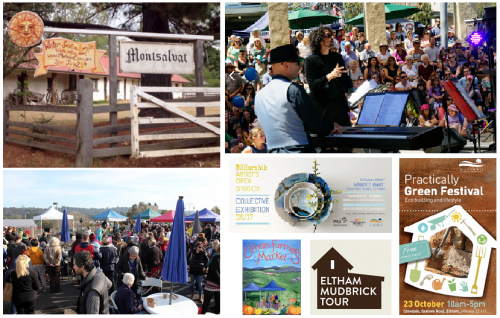
The natural environment
In 1964, the writer and humanist, Alan Marshall, wrote:
The people of Eltham stand for something. There is, in this community, a firm resolve to preserve for their children the natural beauty of the district; to establish a centre whose allegiance is to aesthetic values rather than commercial ones.
In this passage, Marshall captures how the natural beauty of this area is fundamental to the Eltham community’s sense of self and sense of place. Its indigenous mature eucalypts unite the community as guardians, inspires them as artists and connects them to the ancient continent, by adding the dimension of TIME to their lives. It is beneath these gentle giants that lives unfold and stories evolve.
The Eltham Shire
It is a shared history that begins to define Eltham’s identity. So, let’s take a look at the historical context in which we find ourselves, through the words of Alan Marshall, to see what it tells us about the people that were (and are) drawn to live here, in what was once known as The Eltham Shire.


Arts and culture
Situated on the lands of the Wurundjeri people, Eltham’s modern history began to take shape with the pioneers that settled in the area from the late 1830s. After the railroad was extended to Eltham around 1900, Eltham’s reputation blossomed as a heartland for creatives, thinkers and non-conformists. Too many to list here, these included artists, writers, composers, film producers, photographers, sculptors and jewellery designers, academics and philosophers, musicians, landscape designers and architects to name but some. The establishment, in the 1930s of Montsalvat, a stone and mudbrick artists’ colony, played a significant part in first attracting them there. Today, Montsalvat continues to promote the arts, through an array of art exhibitions and classes, literary and musical events. Its cultural activities continue to attract those that love or practise the arts, to Eltham.
Up until the late 1950’s, 100 years after first colonial mappers dismissed the area as a Stringybark forest, the trees were still in Eltham. But then, Marshall tells us, the developer ‘came on the scene’. Eltham’s reputation as an ideal place to live prevented this state from continuing and the Eltham Shire Council had the difficult task of balancing the needs of a growing population and the natural desire of Eltham’s residents to preserve Eltham’s natural beauty.

Environmental activism
“Keep Eltham Evergreen” emerged as a widely advocated slogan and was the result of a public competition to preserve the trees that were destined for removal, in the name of progress.
The Eltham community established themselves as activists, defending the environment by protesting against tree removal, as well as, the demolition of heritage places, like Shillinglaw cottage.
This coming together of the Eltham community to defend what it values was echoed in the recent resistance to the sale of reserves by the Nillumbik Shire Council.


Sustainable living and architectural expression
It is, therefore, not surprising that long before it became fashionable, sustainable living came to Eltham.
“Environmental building” is a term used to describe the building of structures using local materials, whilst considering the impact on, and influence of, the natural world.

It was spearheaded, in Australia, by Eltham mudbrick home builder, Alistair Knox.
Through the 1960s and 70s, the movement drew people, discontent with prevailing suburban ideas about life-style, consumption and attitudes to nature, to Eltham to build unique mudbrick homes.
Since then, a culture of sustainable living and, perhaps, a greater than usual interest in architecture, has flourished in this place. We see this both in Eltham’s public and private buildings.


In residential architecture, we see mid-century Modernist architectural gems like the structurally-innovative, heritage-listed Rice House, Merchant Builder and Sibbel homes, as well as, many unique mudbrick dwellings and other domestic buildings of interest.

In the public realm, the community’s expression of its identity through architecture is historically evident in some of Eltham’s special places. These include:




The valued architecture of Eltham evolved over recent decades and has a few defining characteristics. These include:
-
- A limited palette of natural materials, used truthfully. This palette of materials includes: exposed structural timber posts and beams, timber cladding and window frames, mudbrick and stone, as well as, recycled and recyclable materials and building elements.
- Split floor levels that follow the hilly topography
- Clerestory windows that allow in light from above
- Organic building forms
- Building elements that cast shadows like pergolas, verandas and balconies.




Significantly, Eltham’s varied architecture is almost always nestled within dense native bush gardens with a canopy of indigenous trees.
The Eltham community has historically expressed its unique cultural identity through the built form. The characteristics of Eltham’s special places should inform new developments in Eltham if those developments wish to contribute to, and enrich the cultural and social lives of its inhabitants.


Community – a shared history and sense of belonging
The other places that are seen as special to Eltham are those of natural beauty and those that were or are the product of significant communal effort, i.e. groups of residents working together to preserve or create special places. We can list some of these to be:
-
- Shillinglaw Cottage
- The Barak Bushlands – the result of a collaborative effort between Council and the community
- Edendale Education Centre and Farm
- Alistair Knox Park
- Eltham Town Square and
- The Eltham North Adventure Park
It can be said then that Eltham residents have a shared history through their communal work and place-making and, subsequently, enjoy a deep sense of belonging.






Eltham – a natural meeting place
Today, Eltham has active organisations that draw people together to learn, work, make art and music or play sport. These include the Eltham District Historical Society, ‘Friends of’ groups, the Eltham Men’s shed, University of the Third Age, Incredible Edible Eltham, the Eltham Concert Band, as well as, various sporting groups, like the Eltham Wildcats.
The 2004 Eltham Major Activity Centre Structure Plan describes Eltham as a natural meeting place – where rolling hills meet valley, where urban meets rural and where people meet to socialise, celebrate and connect with nature.
As a place, Eltham still fascinates people and continues to draw people to it from not only within Nillumbik but well beyond. As a meeting place, Eltham provides experiences unlike anywhere else in Melbourne. Against a rich architectural backdrop or a beautiful natural one, these cultural experiences include the following:
-
- art exhibitions
- painting, pottery and other art classes
- choral festivals, soirees and recitals
- poetry readings and book launches
- local produce and musical performances at the weekly farmer’s market
- handmade goods at the craft market
- jazz festivals
- mudbrick house tours
- open artist studios
- sustainable living festivals and
- Winter solstice bonfire celebrations
Cultural identity and values
By looking at the past, we are able to see that Eltham’s identity is historically influenced by a commitment to creative expression and the preservation of nature. Today, we see that the people of Eltham still value the natural environment. Living sustainably and working together as a community. As a place, Eltham remains a natural centre for artistic, cultural and social activities.
In the context of the homogenisation of our cities due to increasing globalisation, the preservation and strengthening of what is unique and special about Eltham is important. Thus, all new development should truly respond to the place’s cultural identity, and not merely pay it lip-service.
In 1980, Alistair Knox published a book called “We are what we stand on – a personal history of the Eltham community.” In his conclusion to the book he writes: “Alan Marshall had the last word when he said, ‘People did not make Eltham, Eltham made people’”.
Whatever the future holds for Eltham, we can be sure, from looking at the past, that there will remain an engaged community of like-minded people who will act as custodians of the past and trustees for the future.
